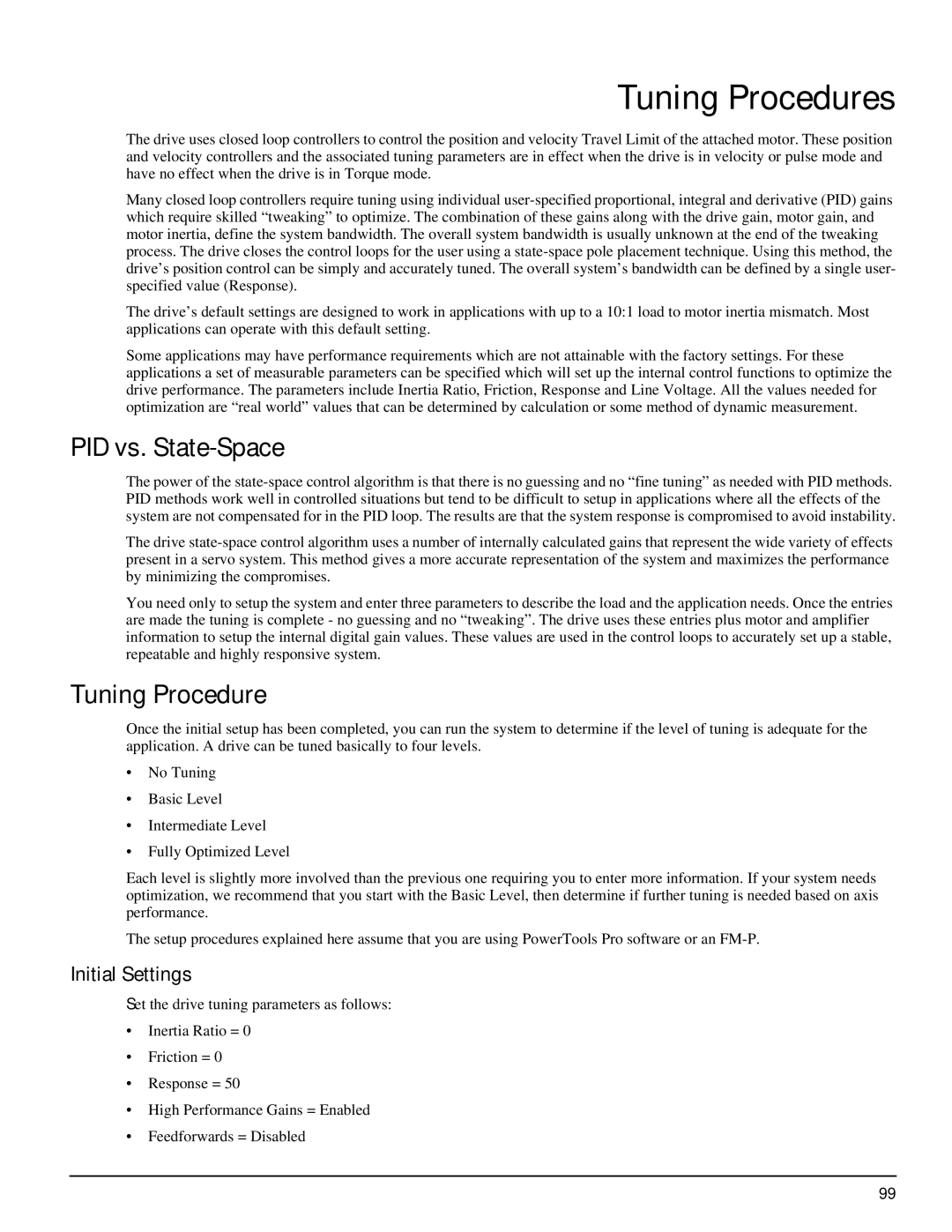Tuning Procedures
The drive uses closed loop controllers to control the position and velocity Travel Limit of the attached motor. These position and velocity controllers and the associated tuning parameters are in effect when the drive is in velocity or pulse mode and have no effect when the drive is in Torque mode.
Many closed loop controllers require tuning using individual
The drive’s default settings are designed to work in applications with up to a 10:1 load to motor inertia mismatch. Most applications can operate with this default setting.
Some applications may have performance requirements which are not attainable with the factory settings. For these applications a set of measurable parameters can be specified which will set up the internal control functions to optimize the drive performance. The parameters include Inertia Ratio, Friction, Response and Line Voltage. All the values needed for optimization are “real world” values that can be determined by calculation or some method of dynamic measurement.
PID vs. State-Space
The power of the
The drive
You need only to setup the system and enter three parameters to describe the load and the application needs. Once the entries are made the tuning is complete - no guessing and no “tweaking”. The drive uses these entries plus motor and amplifier information to setup the internal digital gain values. These values are used in the control loops to accurately set up a stable, repeatable and highly responsive system.
Tuning Procedure
Once the initial setup has been completed, you can run the system to determine if the level of tuning is adequate for the application. A drive can be tuned basically to four levels.
•No Tuning
•Basic Level
•Intermediate Level
•Fully Optimized Level
Each level is slightly more involved than the previous one requiring you to enter more information. If your system needs optimization, we recommend that you start with the Basic Level, then determine if further tuning is needed based on axis performance.
The setup procedures explained here assume that you are using PowerTools Pro software or an
Initial Settings
Set the drive tuning parameters as follows:
•Inertia Ratio = 0
•Friction = 0
•Response = 50
•High Performance Gains = Enabled
•Feedforwards = Disabled
99
